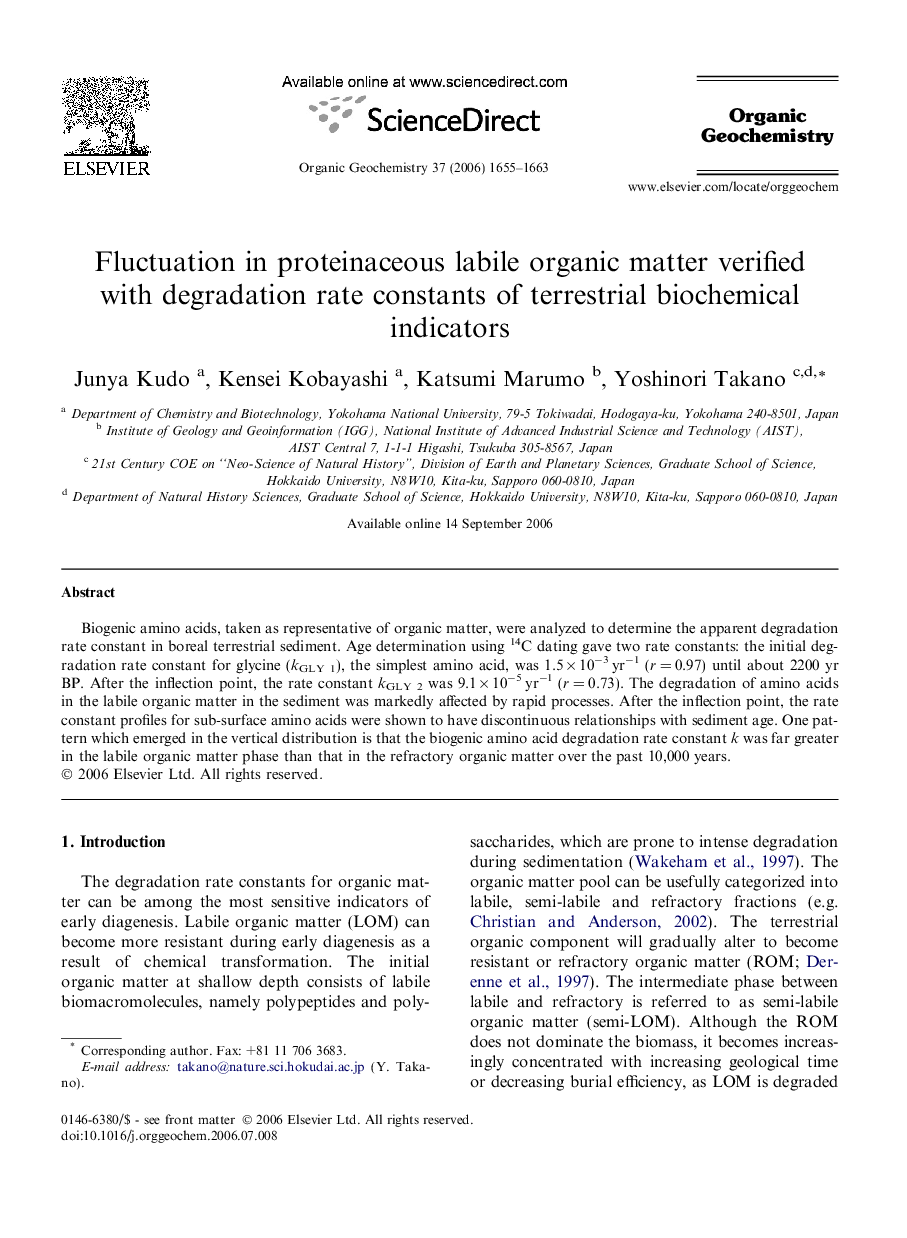| Article ID | Journal | Published Year | Pages | File Type |
|---|---|---|---|---|
| 5162964 | Organic Geochemistry | 2006 | 9 Pages |
Abstract
Biogenic amino acids, taken as representative of organic matter, were analyzed to determine the apparent degradation rate constant in boreal terrestrial sediment. Age determination using 14C dating gave two rate constants: the initial degradation rate constant for glycine (kGLY 1), the simplest amino acid, was 1.5 Ã 10â3 yrâ1 (r = 0.97) until about 2200 yr BP. After the inflection point, the rate constant kGLY 2 was 9.1 Ã 10â5 yrâ1 (r = 0.73). The degradation of amino acids in the labile organic matter in the sediment was markedly affected by rapid processes. After the inflection point, the rate constant profiles for sub-surface amino acids were shown to have discontinuous relationships with sediment age. One pattern which emerged in the vertical distribution is that the biogenic amino acid degradation rate constant k was far greater in the labile organic matter phase than that in the refractory organic matter over the past 10,000 years.
Related Topics
Physical Sciences and Engineering
Chemistry
Organic Chemistry
Authors
Junya Kudo, Kensei Kobayashi, Katsumi Marumo, Yoshinori Takano,
